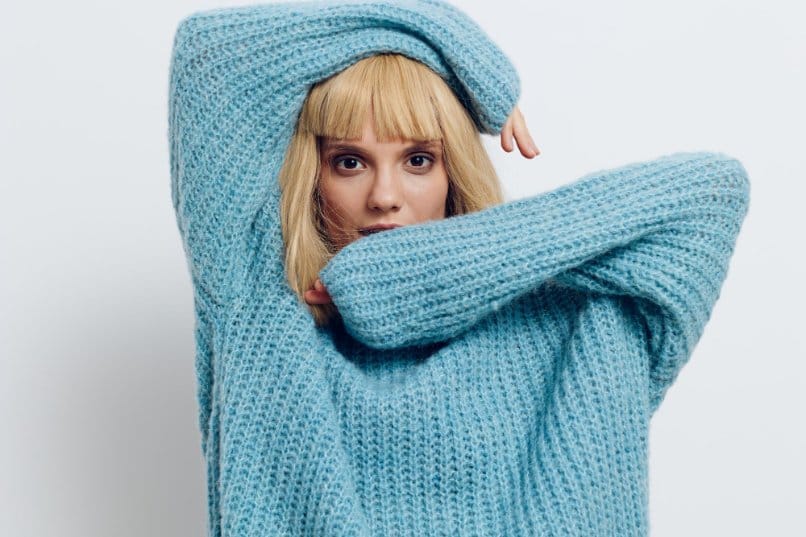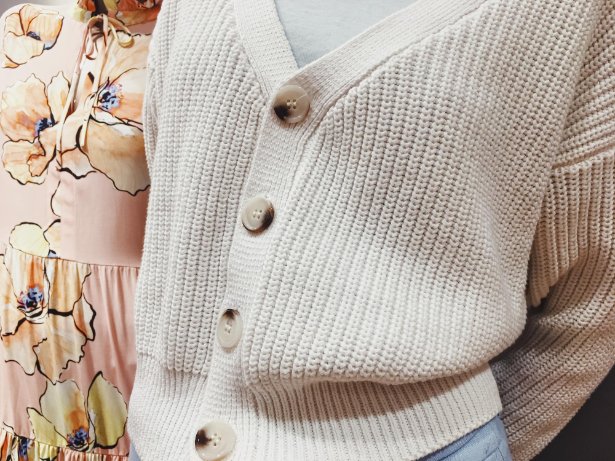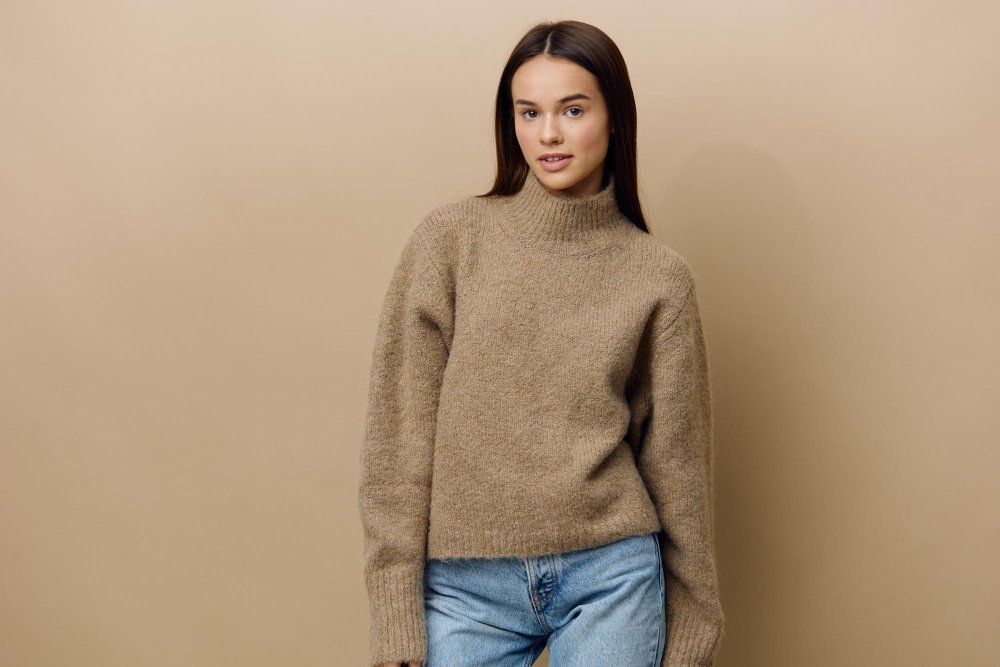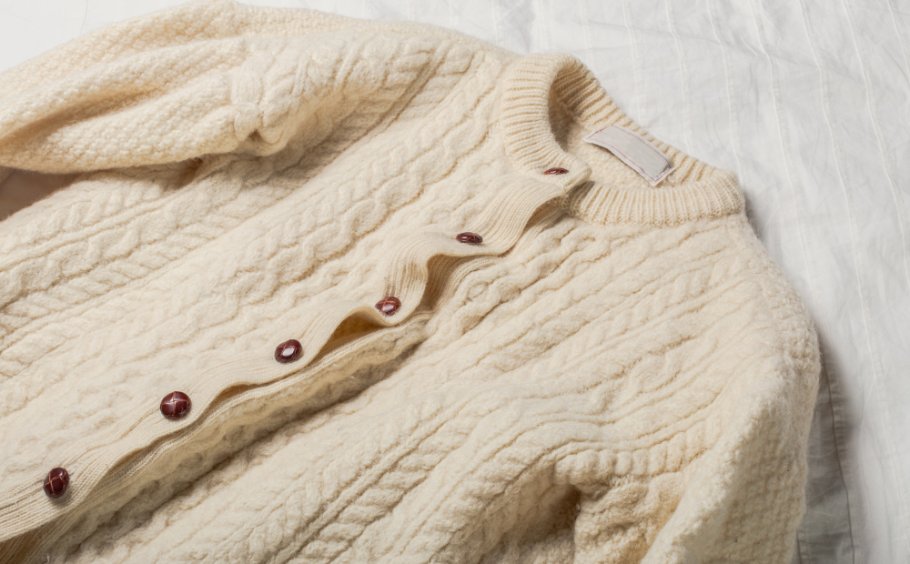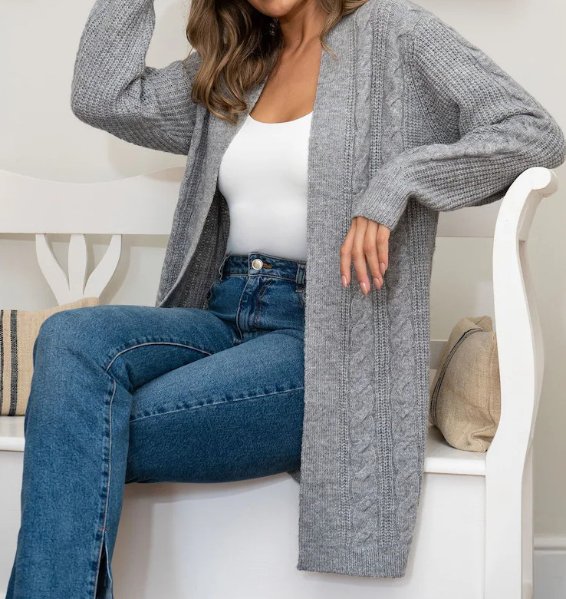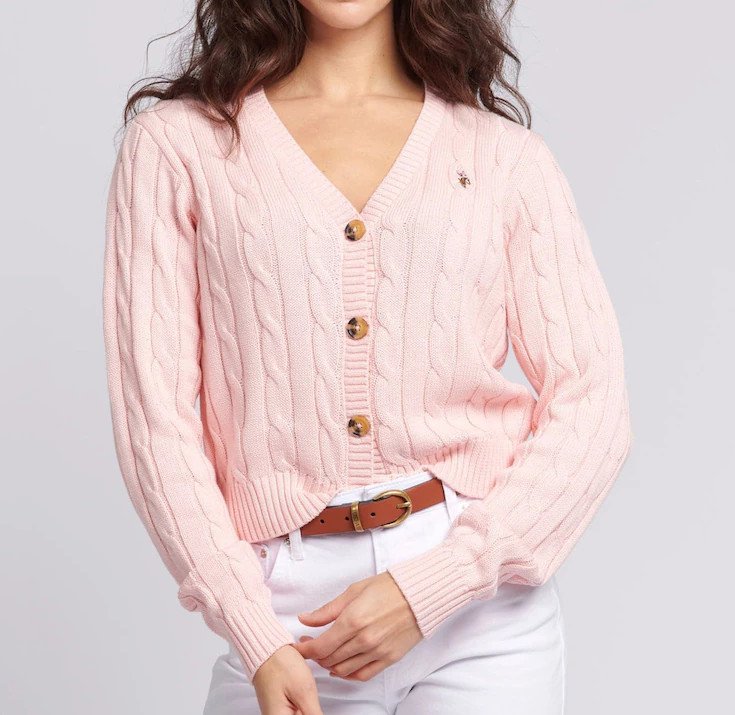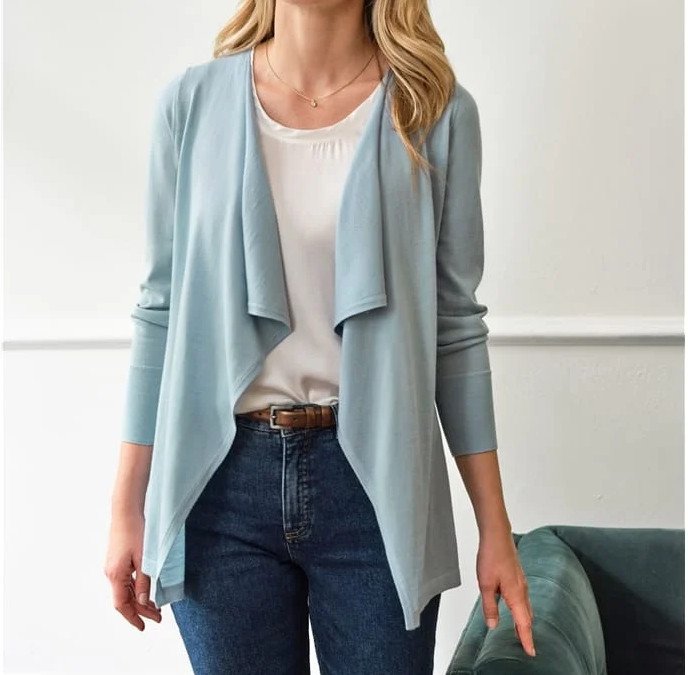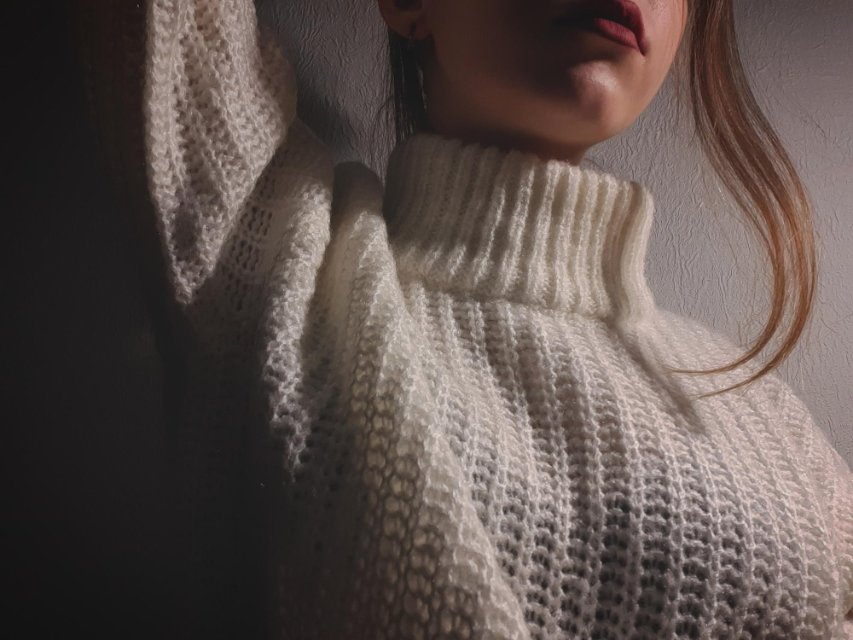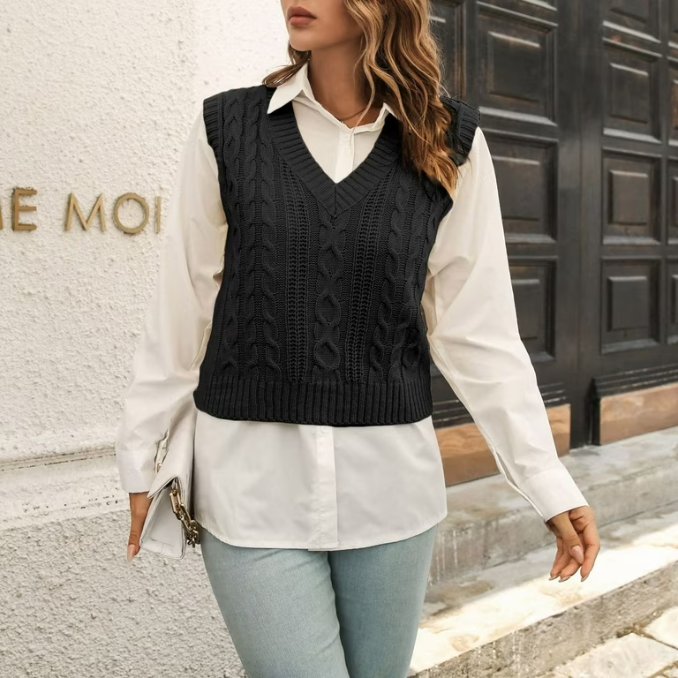Table of Contents
- 2025 Sweater Trends: What’s In and What’s Out
- Understanding Sweater Materials
- Essential Sweater and Cardigan Styles
- Brand Recommendations by Budget
- Sustainable and Ethical Options
- Perfect Sizing and Fit Guide
- Styling for Every Body Type
- Seasonal Styling Guide
- Care and Maintenance
- Common Problems and Solutions
- Building Your Sweater Wardrobe
- Frequently Asked Questions
Key Takeaways
- 2025 trends favor textured materials like bouclé and sculptural silhouettes over traditional cable knits
- Natural fibers like merino wool and cashmere offer superior comfort but require proper care
- Sustainable brands are becoming mainstream with recycled cashmere and ethical production
- Proper fit varies by body type – oversized styles work for some while fitted options flatter others
- A well-curated collection of 8-12 quality sweaters serves most women better than many cheap options
2025 Sweater Trends: What’s In and What’s Out
What’s Trending in 2025
Fashion experts are embracing textured storytelling this year. Think beyond basic knits and explore sweaters that tell a story through their materials and construction.
Trending Now: Textured Materials
2025 is all about tactile experiences. Bouclé sweaters with their soft, cozy looped design are making a major comeback. These textured pieces add volume and visual interest while feeling luxurious against the skin.
Fringe detailing brings boho flair to modern sweaters, while popcorn knits create playful, dimensional surfaces. Even terry-cloth inspired textures are appearing in high-end collections.
Sculptural Sweaters
Structured shoulders, peplum waists, and asymmetrical necklines are transforming sweaters into architectural pieces. These form-fitting styles work perfectly for both casual and semi-formal occasions.
Retro Revival
From groovy 70s patterns to Y2K cropped cardigans, vintage aesthetics dominate 2025. Bold florals, rainbow stripes, and checkerboard patterns bring joy and individuality to winter wardrobes.
What’s Out in 2025
- Traditional cable-knit sweaters in neutral tones
- Monochromatic minimalist styles
- Cheap acrylic blends that pill easily
- Basic crew necks without design elements
Elevated Neutrals
While bright colors have their moment, sophisticated neutrals like mushroom grey, sandstone, and espresso brown are stealing the spotlight. These mature palettes offer versatility while feeling modern and refined.
Understanding Women’s Sweater Materials
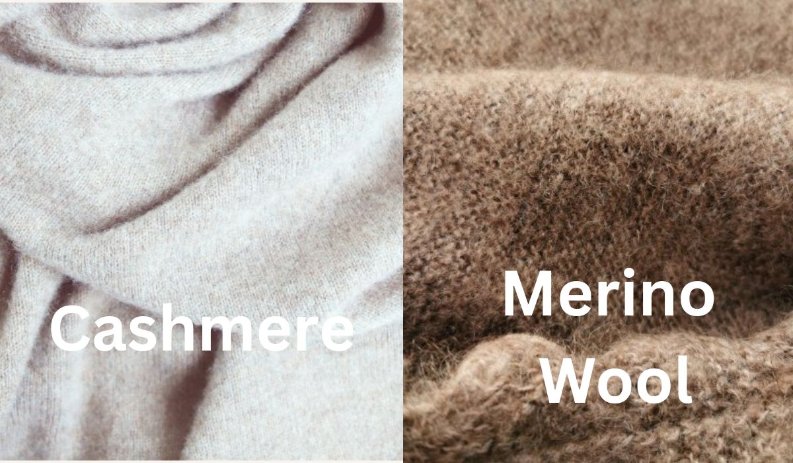
The material of your sweater determines everything from warmth and comfort to durability and care requirements. Understanding these differences helps you make informed choices that match your lifestyle and budget.
| Material | Warmth | Softness | Durability | Care Level | Price Range |
|---|---|---|---|---|---|
| Cashmere | Excellent | Superior | Delicate | High | $200-$800 |
| Merino Wool | Excellent | Very Good | Very Good | Medium | $80-$300 |
| Alpaca | Excellent | Very Good | Good | Medium | $100-$400 |
| Cotton | Moderate | Good | Very Good | Low | $30-$150 |
| Acrylic Blend | Good | Fair | Good | Low | $20-$80 |
Cashmere: Luxury and Softness
Cashmere comes from the soft undercoat of cashmere goats and offers exceptional warmth without bulk. A quality cashmere sweater can be up to eight times warmer than sheep’s wool while feeling incredibly soft.
Cashmere Quality Tips
Look for two-ply cashmere for better durability. Each goat produces only enough fiber for one sweater per year, making genuine cashmere naturally expensive. Learn proper cashmere care to maximize your investment.
Merino Wool: Warmth and Durability
Merino wool offers an excellent balance of warmth, comfort, and practicality. Unlike traditional wool, merino fibers are fine enough to feel soft against sensitive skin.
Key benefits include:
- Natural temperature regulation
- Moisture-wicking properties
- Odor resistance
- Shape retention over time
Cotton: Versatile and Breathable
Cotton sweaters excel in versatility and year-round wear. They’re perfect for those with wool sensitivities or for transitional seasons when heavy warmth isn’t needed.
For better structure and recovery, look for cotton blended with a small percentage of elastane. This prevents the stretching and shape loss common with pure cotton knits.
Natural vs. Synthetic Fibers
Quality blends often provide the best of both worlds. A sweater with 80% wool and 20% nylon maintains warmth while adding durability and easier care. However, keep synthetic content under 20% for optimal breathability and comfort.
Essential Sweater and Cardigan Styles
Style Gallery: Sweaters & Cardigans
Classic Pullovers: Timeless Foundations
Pullovers form the backbone of any sweater collection. Crew neck pullovers offer clean, versatile looks that pair well with everything from jeans to skirts.
V-neck styles create elongated silhouettes and work beautifully for layering over collared shirts. The downward neckline is flattering for most body types and draws attention to your face.
Cardigans: The Ultimate Layering Piece
Cardigans open new styling possibilities with their front-opening design. Button-up cardigans can be fully buttoned for pulled-together looks or left open for casual layering.
Cardigan Styling Rules
- Longline cardigans should hit mid-thigh or longer for optimal proportions
- Cropped cardigans work best with high-waisted bottoms
- Never button the bottom button on multi-button cardigans
- Choose cardigans one size larger if you plan to layer over thick clothing
The Cardigan vs. Sweater Difference
While both are knitwear, cardigans open in the front and typically feature buttons or zippers. Sweaters (pullovers) slip over the head and have no front opening. Cardigans offer more styling versatility, while pullovers provide streamlined silhouettes.
Sweater Vests: Modern Versatility
Sweater vests have made a strong comeback. These sleeveless knits can be styled over button-downs for preppy looks or worn alone for modern edge. Oversized vests pair well with slim-fitting bottoms to balance proportions.
Turtlenecks: Sophisticated Warmth
Turtleneck sweaters feature high, folded collars that cover the neck. Classic fitted turtlenecks create sleek silhouettes perfect for layering under blazers, while chunky versions make bold standalone statements.
Waterfall Cardigans
Waterfall cardigans feature open fronts with draped panels that cascade down like a waterfall. These flowy styles work particularly well for apple-shaped figures as they create vertical lines while providing comfortable coverage.
Brand Recommendations by Budget
Budget-Friendly ($30-80)
- Uniqlo: Exceptional merino wool at unbeatable prices
- H&M: Trendy styles that retain shape surprisingly well
- Old Navy: Reliable basics for everyday wear
- Target (A New Day): Fashion-forward options under $50
Mid-Range ($80-200)
- J.Crew: Timeless styles with excellent construction
- Everlane: Sustainable basics with transparent pricing
- Madewell: Cool, effortless pieces that age beautifully
- Aritzia: Quiet luxury aesthetic with premium materials
- Quince: Direct-to-consumer cashmere under $120
Investment ($200-500)
- Reformation: 95% recycled cashmere, impossibly soft
- Theory: Sophisticated cuts with premium details
- Vince: Boiled cashmere that gets better with age
- Alex Mill: Fresh takes on classic silhouettes
- NAADAM: Ethical cashmere directly from herders
Luxury ($500+)
- Brunello Cucinelli: Italian craftsmanship at its finest
- Loro Piana: World’s finest cashmere and baby cashmere
- The Row: Minimalist perfection in luxury materials
- Johnstons of Elgin: Scottish heritage knitwear
Shopping Strategy
Visit fashion-forward collections for the latest styles, or explore budget-friendly options for everyday essentials. The best time to shop for sweaters is during end-of-season sales (February-March) when you can find premium pieces at significant discounts.
Sustainable and Ethical Sweater Options
Sustainable Fashion Impact
Making responsible choices for people and planet
Sustainable fashion has moved from niche to mainstream. With the fashion industry responsible for significant environmental impact, choosing sustainable sweaters makes a meaningful difference.
Key Sustainability Factors
- Material sourcing: Organic cotton, recycled cashmere, and responsibly sourced wool
- Production methods: Low-impact dyes, water conservation, renewable energy
- Worker welfare: Fair wages, safe working conditions, community support
- Longevity: Quality construction that lasts for decades
Sustainable Brand Spotlight
Reformation
95% recycled cashmere that feels impossibly soft. Industry leader in sustainable fibers and transparent practices.
NAADAM
Direct partnerships with Mongolian herders ensure fair wages and ethical animal treatment while producing world-class cashmere.
Sézane
Paris-based brand producing 2/3 of pieces in Europe with sustainable materials and social impact programs.
Quince
Factory-direct model eliminates middlemen while maintaining ethical manufacturing and premium materials at accessible prices.
Certifications to Look For
- GOTS (Global Organic Textile Standard): Organic fiber and ethical manufacturing
- RWS (Responsible Wool Standard): Animal welfare and land management
- Oeko-Tex: No harmful chemicals in production
- B-Corp Certification: Overall social and environmental performance
Sustainable Care Practices
Extend your sweaters’ life through proper care. Learn about wool care and cotton care to maximize your investment while minimizing environmental impact.
Perfect Sizing and Fit Guide
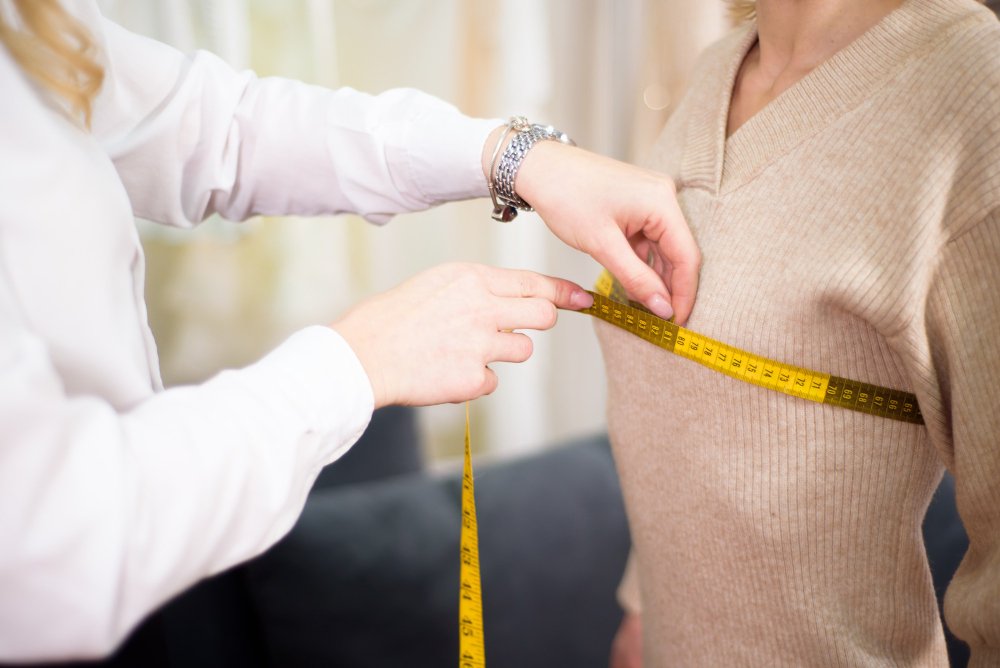
How to Choose the Right Sweater Size
Proper fit makes the difference between a sweater you love and one that sits unworn in your closet. Here’s how to find your perfect size:
Measurement Guide
- Bust: Measure the fullest part while wearing a well-fitting bra
- Waist: Find your natural waist, typically the narrowest part
- Hips: Measure at the widest point, usually 7-9 inches below waist
- Sleeve length: From shoulder to wrist with arm slightly bent
Should a Sweater Be Tight or Loose?
This depends on the style and your preference:
- Fitted sweaters should skim your body without pulling across the bust or hips
- Relaxed fits should have 2-4 inches of ease around the bust
- Oversized styles can have 6+ inches of ease but shoulders should still align properly
Should You Size Up When Buying a Sweater?
Consider sizing up if:
- You plan to layer thick clothing underneath
- The sweater is 100% natural fiber (wool shrinks slightly)
- You prefer relaxed fits
- You’re between sizes and the brand runs small
Size down if:
- You want a fitted look
- The brand is known to run large
- The sweater has stretch fibers (elastane, spandex)
How Should a Sweater Fit a Woman?
Perfect Fit Checklist
- Shoulders align with your natural shoulder line
- Sleeves end at wrist bone (can be pushed up if desired)
- Body has appropriate ease for the intended style
- Length flatters your proportions
- Neckline sits comfortably without gaping or tightness
How to Know Your Cardigan Size
Cardigans typically fit more loosely than pullovers. The key measurements are:
- Bust circumference when buttoned (if applicable)
- Shoulder alignment
- Sleeve length
- Overall length relative to your torso
Styling for Every Body Type
Petite Frames
- Choose cropped or waist-length styles
- Avoid chunky, oversized knits
- Opt for fine to medium-weight materials
- Look for vertical design elements like V-necks
- Try monochromatic color schemes for length
Plus Size
- Strategic draping creates flattering silhouettes
- V-necks and scoop necks elongate the neckline
- Longer cardigans provide elegant coverage
- Avoid tight fits across the widest part
- Empire waists and A-line shapes work well
Tall Figures
- Oversized styles complement your frame
- Horizontal patterns add visual width
- Chunky textures create interesting proportions
- Cropped sweaters can be very flattering
- Layer different lengths for visual interest
Apple Shape
- Empire waists draw attention upward
- Waterfall cardigans create vertical lines
- Avoid clingy fabrics around the midsection
- V-necks and open cardigans elongate
- Focus on sleeves and neckline details
Pear Shape
- Emphasize shoulders with interesting necklines
- Boat necks and off-shoulder styles work well
- Avoid hip-length hemlines
- Choose fitted tops with A-line cardigans
- Draw attention up with patterns or textures
Hourglass Shape
- Fitted sweaters showcase your waist
- Wrap cardigans emphasize curves naturally
- Avoid boxy, shapeless styles
- Belt cardigans to define your waist
- Choose styles that follow your natural lines
What Style of Sweater is Most Slimming?
The most universally flattering sweater styles include:
- V-neck pullovers: Create vertical lines and elongate the torso
- Wrap cardigans: Define the waist while providing coverage
- Fitted ribbed sweaters: Skim the body without adding bulk
- Vertical cable knits: Draw the eye up and down rather than across
How to Look Slim in a Sweater
Slimming Sweater Tips
- Choose darker colors for a streamlined silhouette
- Ensure proper fit – too tight emphasizes problem areas
- Use strategic layering to create shape
- Select vertical patterns over horizontal ones
- Avoid bulky textures that add visual weight
Seasonal Styling Guide
Spring
- Lightweight cotton and linen blends
- Cropped cardigans over dresses
- Pastel colors and fresh patterns
- Short-sleeve sweaters for cool evenings
Summer
- Ultra-light knits for air conditioning
- Open cardigans as cover-ups
- Breathable cotton and bamboo blends
- Sleeveless sweater vests
Fall
- Medium-weight wool and cashmere
- Rich colors like burgundy and forest green
- Perfect layering season
- Turtlenecks under blazers
Winter
- Heavy knits and thick cardigans
- Thermal layering systems
- Chunky textures for warmth
- Strategic material combinations
Year-Round Versatility
The best sweaters work across multiple seasons. Look for medium-weight knits in neutral colors that can be layered up or down. A quality merino wool sweater can work with shorts in summer air conditioning or under a coat in winter.
Transitional Weather Dressing
Those tricky in-between seasons call for strategic layering. Start with a lightweight base and add a cardigan that can be easily removed as temperatures change throughout the day.
Care and Maintenance
Proper care extends the life of your sweaters dramatically. With the right techniques, a quality sweater can last decades.
Sweater Care Guide
Proper care extends sweater life from years to decades
5-Step Washing Process
Pro Tip: A quality sweater with proper care can last 10-20 years, making it a true investment piece
Washing Guidelines by Material
| Material | Washing Method | Water Temperature | Drying Method | Special Notes |
|---|---|---|---|---|
| Cashmere | Hand wash or delicate cycle | Cold | Flat dry | Use wool-specific detergent |
| Merino Wool | Gentle cycle in mesh bag | Cool | Flat dry | Avoid fabric softener |
| Cotton | Normal wash | Warm | Low heat or air dry | May shrink slightly |
| Acrylic Blend | Normal wash | Warm | Low heat | Most durable option |
Common Problems and Solutions
Pilling Prevention and Removal
Pilling happens when short fibers work loose and tangle together. While most sweaters will pill eventually, you can minimize and manage it:
Anti-Pilling Strategies
- Choose longer-staple fibers (merino over regular wool)
- Avoid friction from bags and seat belts
- Turn sweaters inside out when washing
- Use a fabric shaver or sweater comb for removal
- Hand-pick pills rather than pulling them
Shrinkage Recovery
If your sweater shrinks:
- Soak in cool water with hair conditioner for 30 minutes
- Gently stretch while damp
- Lay flat to dry, reshaping as needed
- For severe shrinkage, consider professional restoration
Static Control
Natural remedies for static include:
- Increase humidity in your environment
- Use dryer balls instead of fabric softener
- Lightly mist with diluted fabric softener solution
- Choose natural fibers over synthetics
Moth Prevention
Protect your investment with these moth-prevention strategies:
- Store only clean sweaters (moths are attracted to body oils)
- Use cedar blocks, lavender, or pheromone traps
- Vacuum storage areas regularly
- Inspect and air out stored items periodically
Building Your Sweater Wardrobe
Expert Guide: Essential Knitwear for Your Wardrobe
Learn how to choose the right style, design, and composition for knitwear to create a balanced fall-winter wardrobe
How Many Sweaters Should I Have?
A well-curated collection of 8-12 quality sweaters serves most women better than many cheap options. Focus on versatile pieces that work across multiple seasons and occasions.
Essential Sweater Wardrobe
- 2-3 neutral pullovers (black, navy, gray, or beige)
- 1-2 cardigans for layering
- 1 statement sweater in your favorite color or pattern
- 1 lightweight option for spring/summer
- 1 chunky knit for maximum warmth
- 1 dressy option for formal occasions
How Do I Choose a Good Sweater?
Quality Assessment Checklist
- Feel the fabric – quality materials feel substantial and soft
- Check seam construction – look for even, tight stitching
- Examine the neckline – it should lay flat without puckering
- Test stretch recovery – gently stretch a small section and release
- Read care labels – understand maintenance requirements
- Consider cost per wear – expensive sweaters cost less if worn frequently
How to Tell if a Sweater is Good Quality
High-quality sweaters share these characteristics:
- Fiber content: Higher percentages of natural fibers
- Weight: Substantial feel without being heavy
- Construction: Reinforced seams and finished edges
- Shape retention: Maintains structure after wearing
- Color fastness: No bleeding or fading after washing
Investment Priorities
When building your collection, invest in these pieces first:
- A black or navy cardigan (most versatile)
- A neutral pullover in your most flattering style
- A quality cashmere sweater (lifetime piece)
- A chunky knit for cold weather
How Many Times Should a Sweater Be Worn?
Sweaters can typically be worn 3-5 times before washing, depending on:
- Material (wool naturally resists odors)
- Activity level while wearing
- Whether you wore an undershirt
- Environmental factors (humidity, temperature)
What is the Best Way to Have Sweaters in Your Closet?
Organize your sweater collection by:
- Folding: Stack by weight and frequency of use
- Grouping: Keep similar styles together
- Accessibility: Store seasonal favorites at eye level
- Protection: Use cedar elements and maintain proper humidity
Frequently Asked Questions
Final Recommendations
Building a quality sweater wardrobe is an investment in your comfort, style, and confidence. Start with versatile pieces in flattering cuts and quality materials. Remember that proper care extends the life of your sweaters significantly, making even expensive pieces worthwhile investments.
Focus on finding brands and styles that work for your body type, lifestyle, and budget. Whether you choose budget-friendly options from Uniqlo or invest in luxury cashmere from Reformation, the key is selecting pieces you’ll reach for again and again.
Most importantly, don’t be afraid to try new styles and experiment with different silhouettes. The perfect sweater should make you feel comfortable, confident, and authentically yourself.

